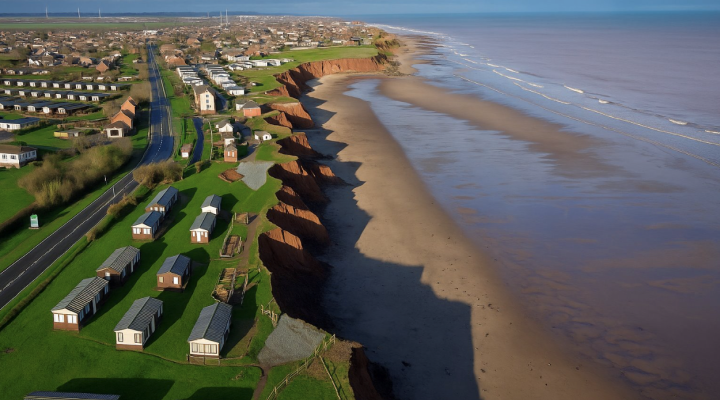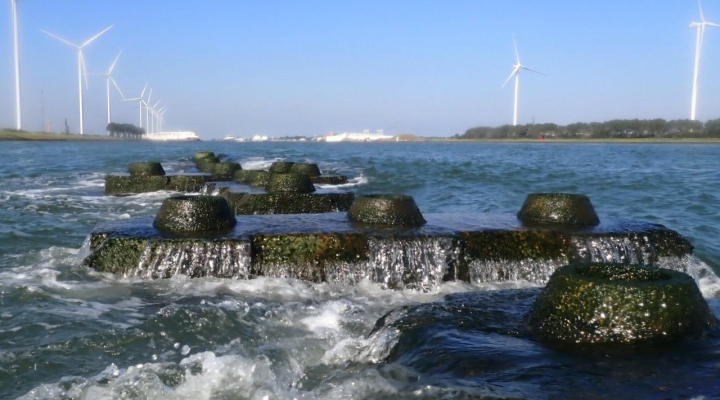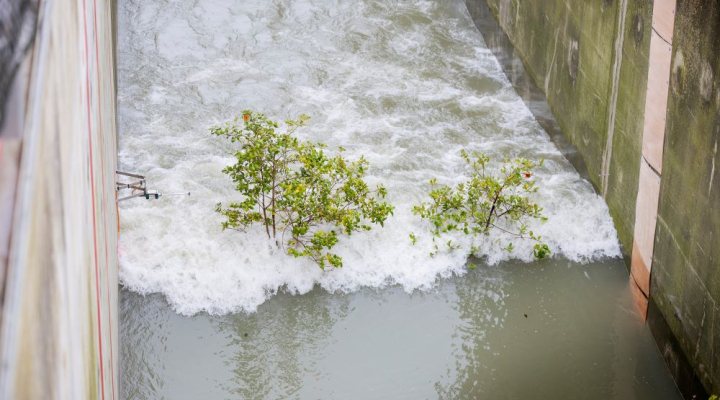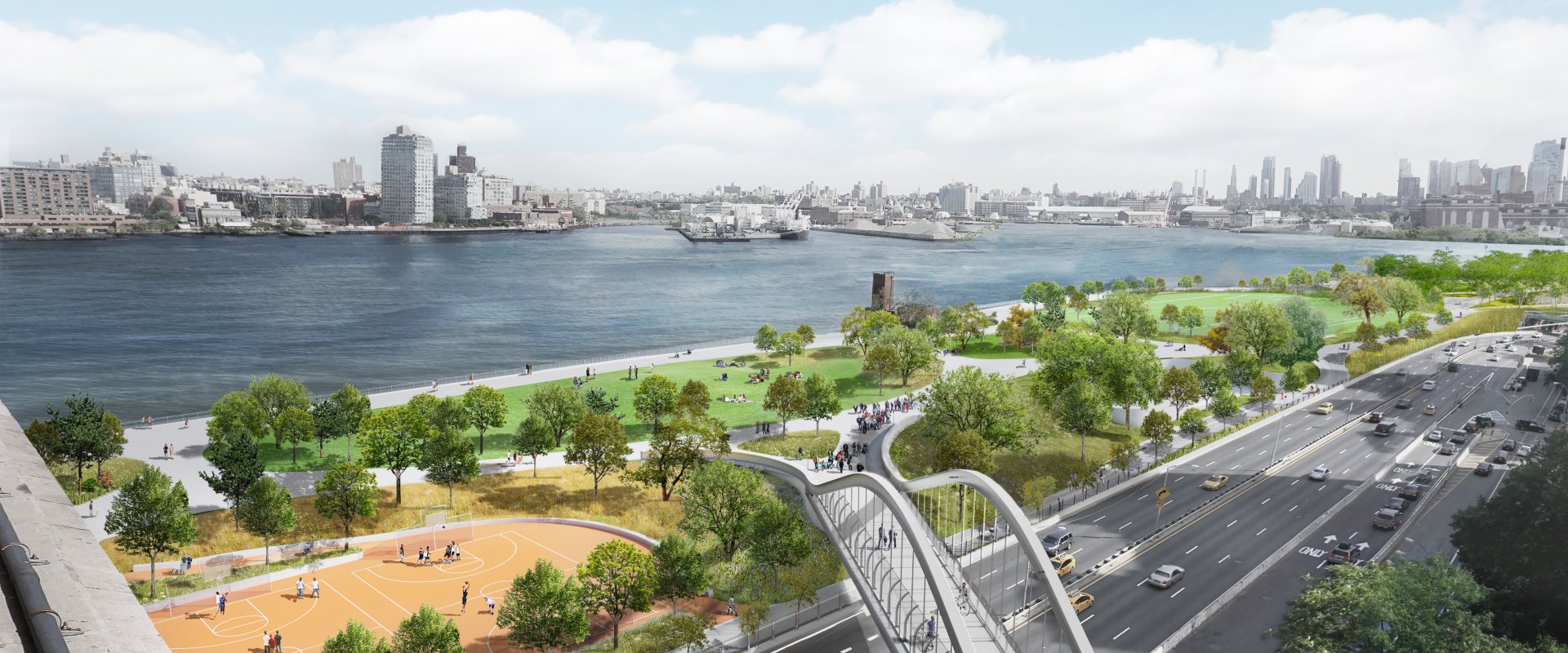
First of coastal projects Lower Manhattan breaks ground
Mayor Bill de Blasio of New York announced the beginning of major construction activities on the East Side Coastal Resiliency (ESCR), a 1.45 billion US dollar flood defence project that responds to the devastations caused by hurricane Sandy in 2012.
The flood defence has been engineered by Arcadis and One Architecture provided the integrated design.
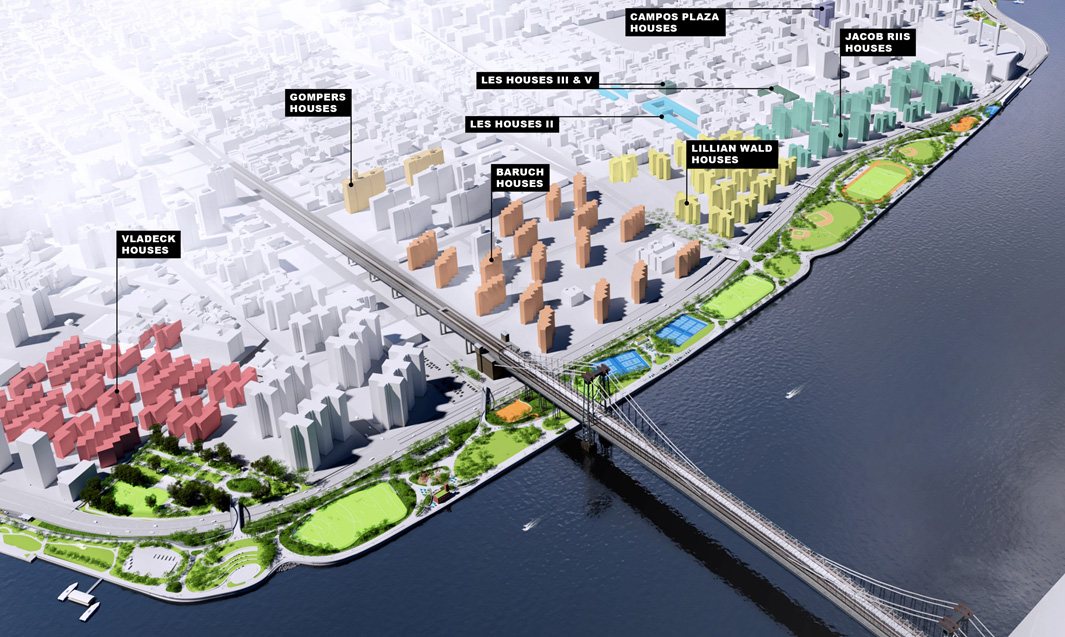

Raised parkland
ESCR covers a 2.4-mile waterfront along the East river in Lower Manhattan. The work includes the construction of an integrated defence system of raised parkland, floodwalls, verges, and movable floodgates. Once completed, it will extend flood protections and improve open spaces for more than 110,000 New Yorkers.
Recently, the sheet piling work started with installing an underground wall of structural sheeting in Stuyvesant Cove Park. This is the first step towards constructing the above-ground floodwall.
The start marks the construction phase of the most iconic project of the design competition Rebuild by Design that was launched by the Obama administration in response to hurricane Sandy and the storm surge that heavily impacted New York City.
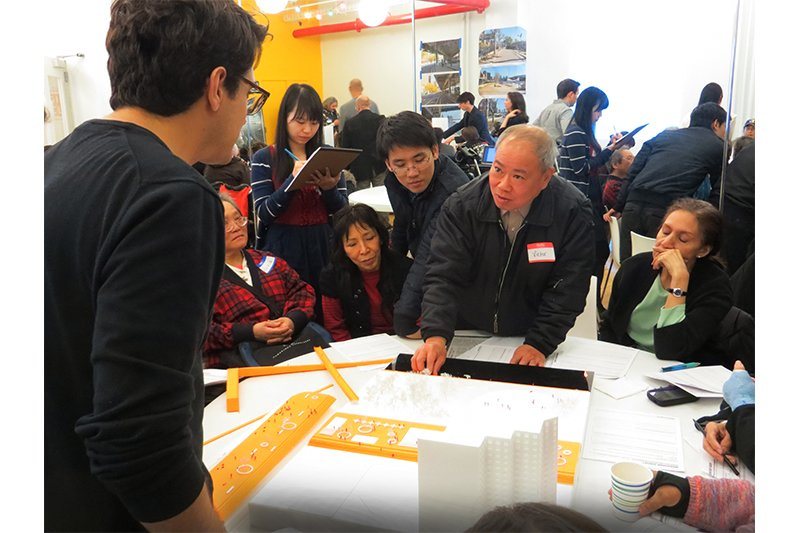

Awarded Big U design
The Rebuild by Design competition in 2014 was the first international job for now Dutch water envoy Henk Ovink. Together with then state secretary for housing under the Obama administration, Shaun Donovan, they set up this challenge. A global call for ideas to build New York back better after Sandy, let to 220 unique partnerships of architects, consultancies and knowledge institutes to enter the competition. Seven entries, including the Big U, were awarded to further develop their ideas in consultation with the local communities and authorities.
Finally, the city of New York adopted the Big U design for Lower Manhattan that is now brought under construction in several sections. The first section is East Side Coastal Resiliency.
Citizens participation
The Big U entry was a team led by One Architecture and Bjarke Ingels Group (BIG). According to director Matthijs Bouw of One Architecture, the Big U showed a new role for designers in relation to flood infrastructure projects: ‘The classic approach, especially in the US, is to lead with engineers. But for climate adaptation projects in complex urban areas, it is better to work in a much more integrated way, led by designers.
This approach enabled One Architecture to involve engineers, authorities and local communities in the development and to connect the project to several other urban functions, such as housing, traffic, parks and recreation.
'We continue to play an extensive role on behalf of the various New York authorities', adds Bouw, 'not only for the development of the ESCR flood scheme, but also for six other Lower Manhattan coastal projects that resulted from the Big U design.’
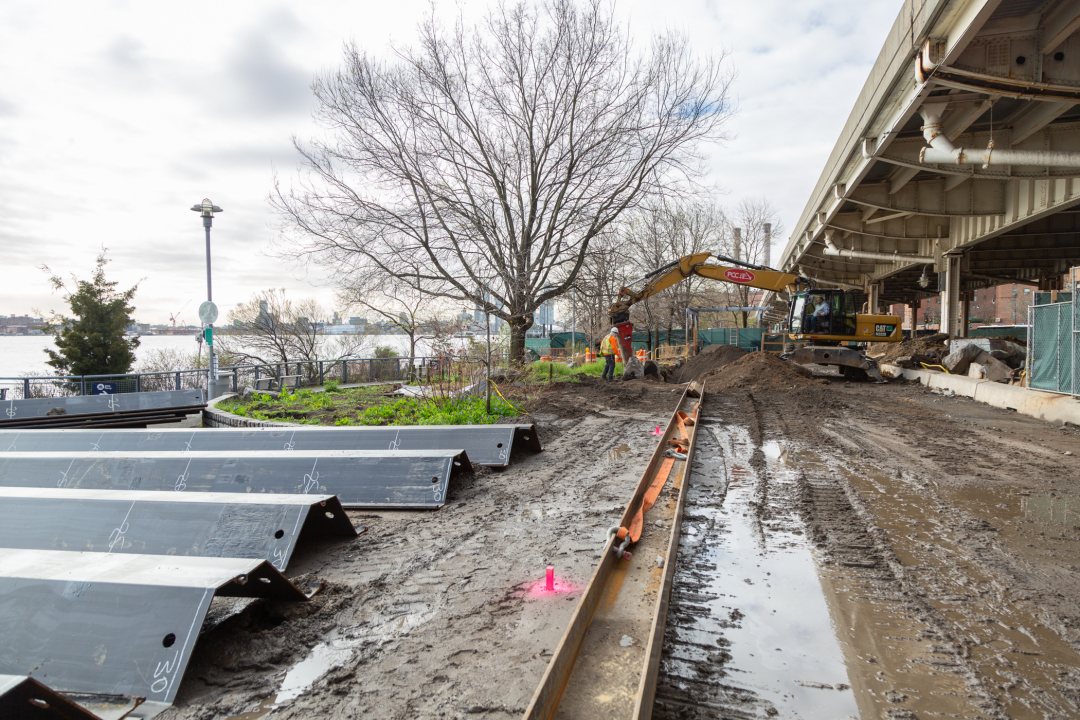

Complex project for engineering
Consultancy firm Arcadis performed technical feasibility, conceptual design and costing and benefit cost analyses, resulting in the allocation of 335 million US dollar in federal funding. Given the fact that the consultation involved 40 official agencies and 30 community organisations, the detailing of the flood scheme has been a huge job, according to Piet Dircke, Global leader resilience and water management at Arcadis.
‘Only a few minor engineering details are left', says Dircke. 'For a complex infrastructural situation including several road crossings this is amazing. Especially when you take into account the active involvement of so many authorities and community groups. And let us not forget the change of the cities administration and the Covid-pandemic that hit New York hard. That all makes it remarkable that eight years after the first consulting Rebuild by Design workshops, this project now breaks ground’.
When constructed, the solution will effectively take over 30,000 households out of the floodplain.
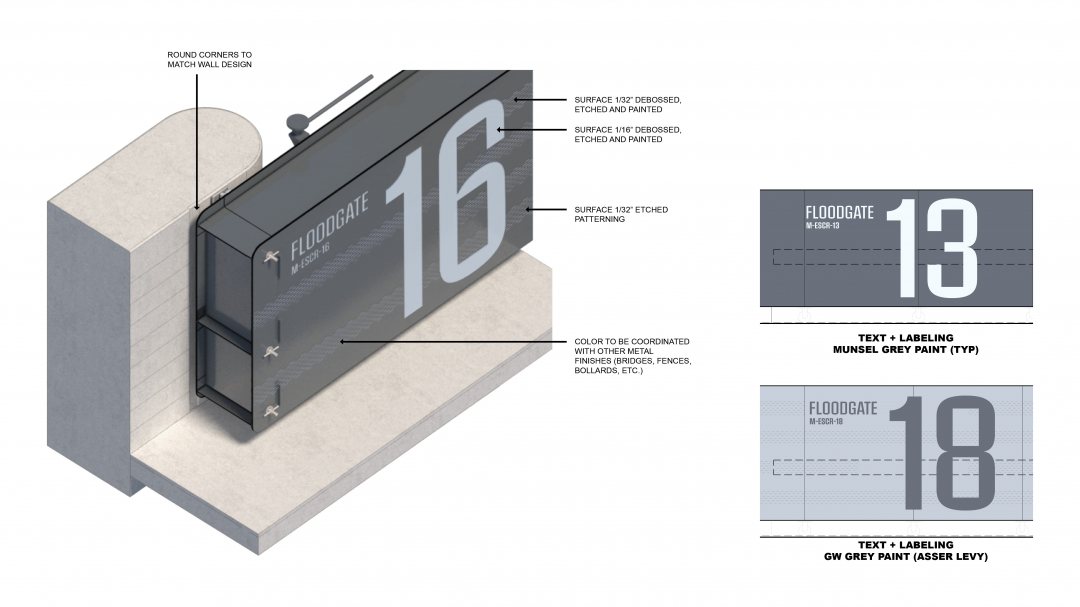

Active water management
Now the engineering job is almost over for Arcadis, Dircke wants to point out that with a project like this it does not end with the construction of a flood scheme. ‘The construction includes around 20 floodgates that have to be closed in case of a storm surge. These gates do not only require maintenance but the closing and re-opening of the gates must also be managed.’
As a Dutchman, Dircke is very aware that flood prevention is a complex issue that requires an active governmental coordination, in response to both storm surges and cloud bursts. ‘Perhaps this is a good moment for New York City to consider a special municipal water authority. If only for a collective decision to close all East side river mobile floodgates at the same time.'
The New York Department of design and construction already started the engineering process for the second section, Financial district and seaport climate resilience master plan. The third section, Battery Coastal Resilience, is being tendered.




